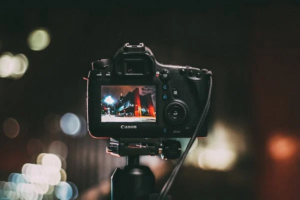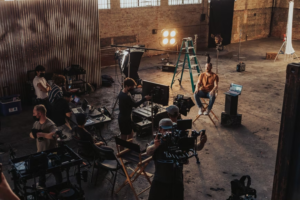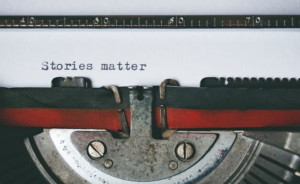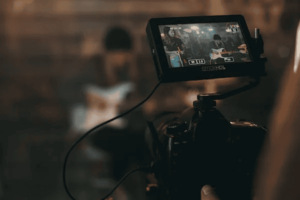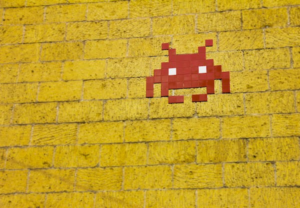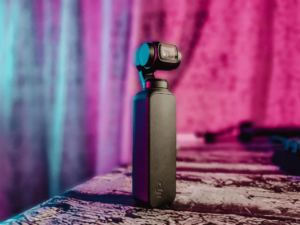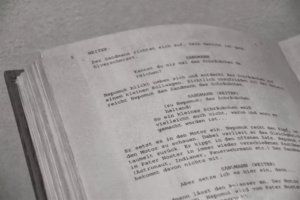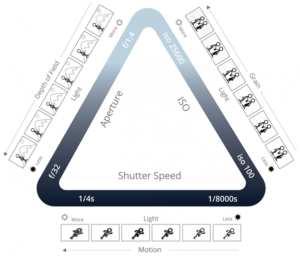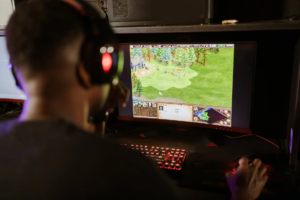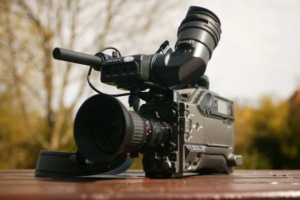Cinematic shots are a series of frames that run uninterrupted in a visually appealing or unique way. Filmmakers often utilize cinematic shots to present ideas, narrative elements, movement, and emotion to the audience.
Establishing Shot
A film’s establishing shot is the first shot at the top of the scene that shows the location. It may follow an aerial shot. In “The Shawshank Redemption,” the establishing shot introduces one of the main characters and the plot.
Learn more about establishing shots and how to create one for your film.
Extreme Long Shot
An extreme long shot, or wide shot, makes the subject look small against their backdrop.  Scene from “Mad Max: Fury Road“
Scene from “Mad Max: Fury Road“
Bird’s Eye Shot
The bird’s eye shot shows the scenery surrounding a subject and creates a sense of movement and scale.  Scene from “Eternal Sunshine of the Spotless Mind“ A shot from even higher up is known as an aerial shot, which can be taken from a drone or helicopter and establishes a larger expanse of the surrounding scenery.
Scene from “Eternal Sunshine of the Spotless Mind“ A shot from even higher up is known as an aerial shot, which can be taken from a drone or helicopter and establishes a larger expanse of the surrounding scenery.  Scene from “Blade Runner (1982)“ In “The Sound of Music,” the bird’s eye shot provides a glimpse of the main character in her element.
Scene from “Blade Runner (1982)“ In “The Sound of Music,” the bird’s eye shot provides a glimpse of the main character in her element.
Long Shot
A long shot is closer than the extreme long shot, but the subject does not fill the frame.  Scene from “The Martian“ In “Lawrence of Arabia,” a long shot provides a wide view of the setting.
Scene from “The Martian“ In “Lawrence of Arabia,” a long shot provides a wide view of the setting.
Medium Shot
A medium shot provides more detail on the subject, framing them from about the waist up in most cases. It differs from an eye-level shot in that it provides more context of the surroundings. 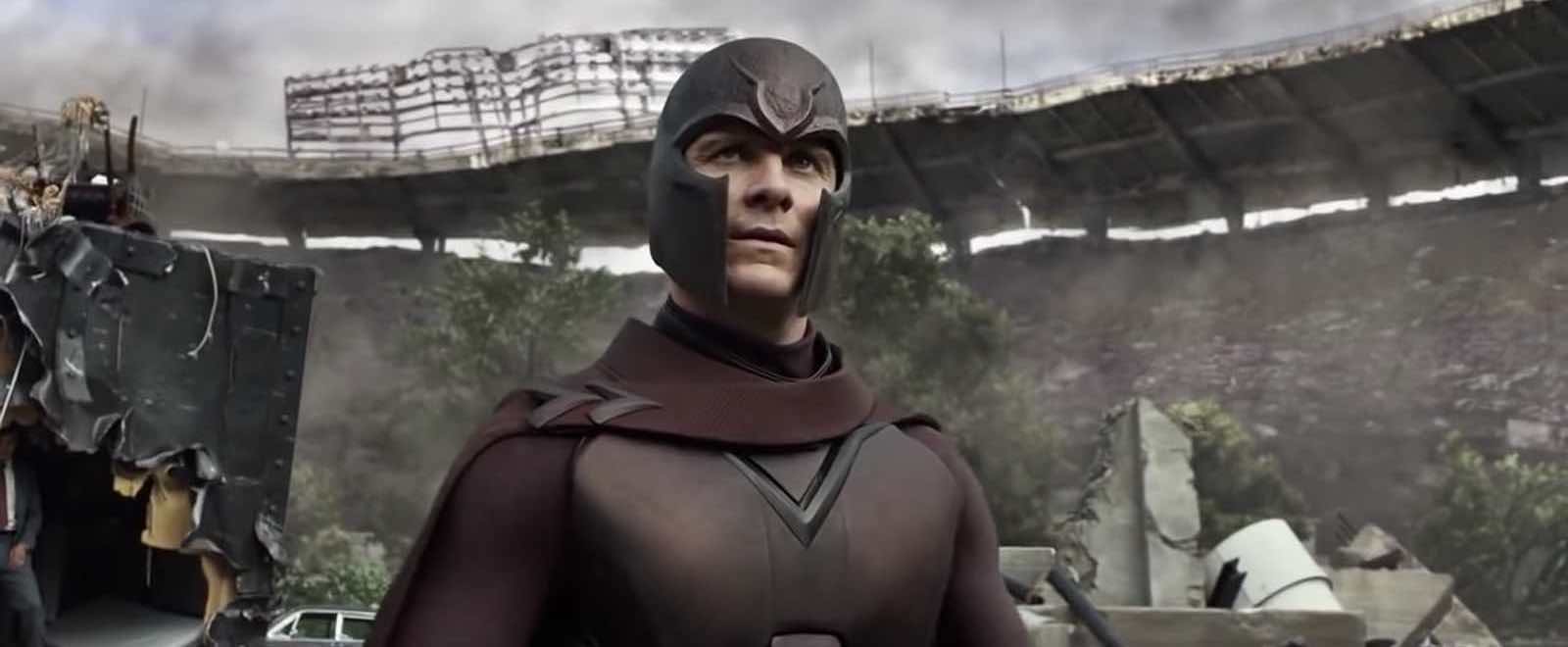 Scene from “X-Men: Days of Future Past“
Scene from “X-Men: Days of Future Past“
Medium-Long Shot
A medium-long shot usually frames the subject from head to knees. This shot can utilize any angle, so using it from behind a subject can create a unique viewing experience.
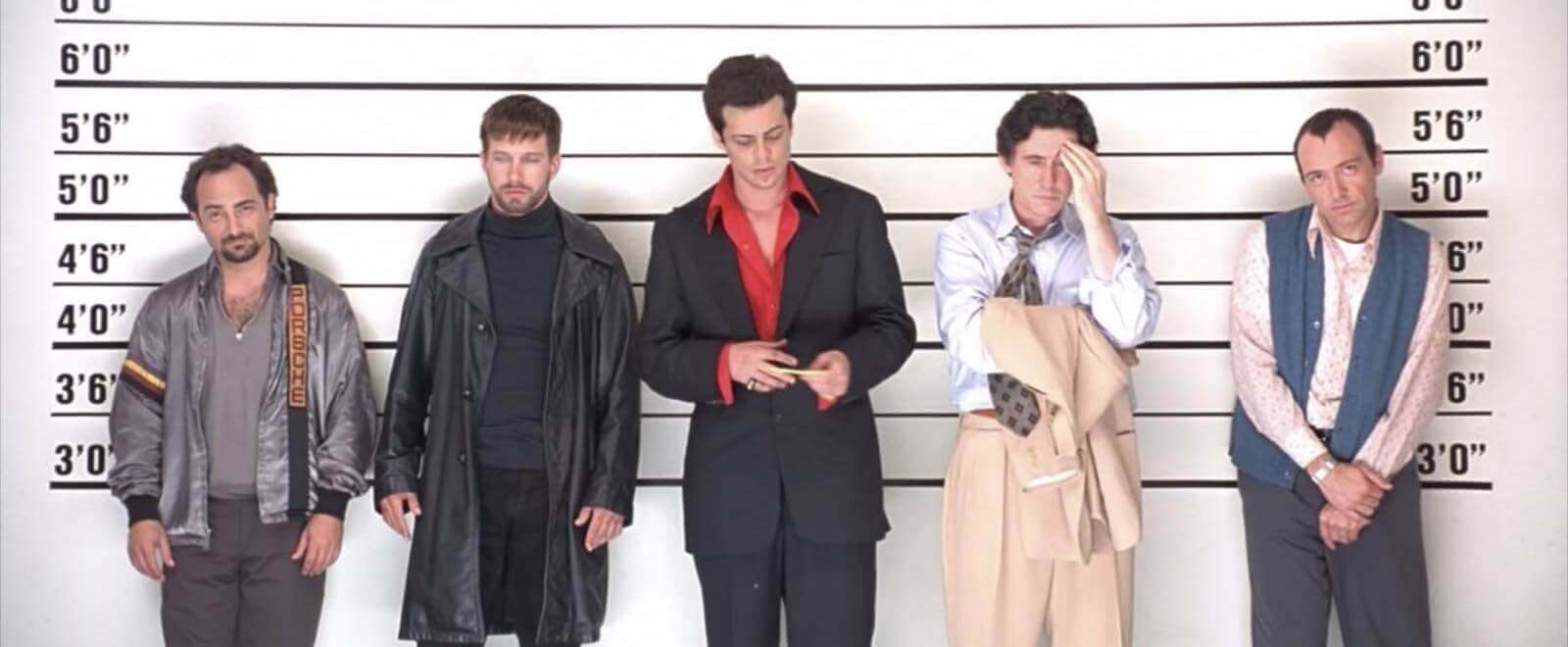
Scene from “The Usual Suspects“
Full Shot
Full shots allow the subject to fill the frame while keeping the focus on the scenery.  Scene from “Django Unchained“ Each character is visible in “Guardians of the Galaxy” after being taken into custody.
Scene from “Django Unchained“ Each character is visible in “Guardians of the Galaxy” after being taken into custody.  Scene from “Guardians of the Galaxy”
Scene from “Guardians of the Galaxy”
Ground-Level Shot
If the subject of a shot is on the ground, using a ground-level shot captures what is happening on that surface.  Scene from “Star Wars: Episode VIII – The Last Jedi“ The ballet shoes from the scene in “Black Swan” below provide a glimpse into what the character is doing as she practices her dance.
Scene from “Star Wars: Episode VIII – The Last Jedi“ The ballet shoes from the scene in “Black Swan” below provide a glimpse into what the character is doing as she practices her dance.  Scene from “Black Swan” It may be used to provide a wider view of the scene as well.
Scene from “Black Swan” It may be used to provide a wider view of the scene as well.  Scene from “Full Metal Jacket“
Scene from “Full Metal Jacket“
Crane Shot
A crane shot uses a robotic crane to sweep up and over a scene. The trainyard scene in “Gone With the Wind” was one of the earlier examples of the use of a crane to film a scene.
Tracking Shot
A tracking shot moves with the subject, following beside or behind them to track their movement. In “Paths of Glory,” the tracking shot allows the audience to view all of the characters in the scene as they prepare for battle.
Learn how to further use and improve tracking shots.
Static or Fixed Shot
When the camera doesn’t move, this shot is known as static or fixed. Its purpose is to emphasize the movement and appearance of the subject, such as the example below from “Step Brothers.”
Bridging Shot
A bridging shot notates a shift in place or time.
Dolly Zoom
Also called a camera dolly shot, the dolly zoom involves affixing the camera to a dolly mechanism that allows the operator to move and zoom. You can see an example of this piece of film equipment.
In “Jaws,” filmmakers used a dolly zoom to highlight the tension and fear of beachgoers as they spot the shark.
Using a dolly isn’t the only way to zoom in or out on a frame. You can also alter the focal length of the lens to create a different emphasis. Quentin Tarantino often uses the crash zoom effect by adjusting the focal length. In the opening scene of “The Conversation,” the zoom motion provides context for the setting and location.
Handheld Shot
A handheld shot is filmed by a camera held in the hands. An example of this shot is evident during the fight in the pool hall in “Mean Streets.”
Low Angle Shot
When using the low-angle shot, you can convey that the character showcased is superior, as it feels like the audience is looking up at them. When filming Darth Vader in the “Star Wars” franchise, George Lucas often used low-angle shots to create a menacing presence.  Scene from “Star Wars: Episode V – The Empire Strikes Back“ View additional low angle shots in films and what emotions they convey to the audience.
Scene from “Star Wars: Episode V – The Empire Strikes Back“ View additional low angle shots in films and what emotions they convey to the audience.
High Angle Shot
With the high-angle shot, the camera points down at a character or subject to create a feeling of inferiority.  Scene from “The Princess Bride“ Another example is evident in the “Shawshank Redemption,” when many shots of Andy are filmed from above to emphasize his position of weakness.
Scene from “The Princess Bride“ Another example is evident in the “Shawshank Redemption,” when many shots of Andy are filmed from above to emphasize his position of weakness.
View additional shot examples and a few more that anyone can try. With over 50 different cinematic shots, filmmakers can use various techniques to create unique scenes.
Tips for Shooting Cinematic Footage
Cinematic shots require more than just a good camera. Follow these tips to get excellent cinematic shots for your next film.
Storyboard
Often overlooked as a key step in the filmmaking process, creating a storyboard is vital to the outcome of the film. A storyboard is especially important in a narrative film, as it involves creating the shot list and defining how you plan to shoot each scene.
Shoot 24 FPS
Shooting at 24 frames per second (FPS) will make your footage look more like professional film footage, as this is the most commonly utilized setting in Hollywood.
Shallow Depth of Field
 Scene from “The Night Of“ The depth of the field in a shot refers to which part of the frame is in focus. Utilizing a shallow depth of field creates a more cinematic feel, blurring out what’s in the background of a shot to create more focus on a central character or object.
Scene from “The Night Of“ The depth of the field in a shot refers to which part of the frame is in focus. Utilizing a shallow depth of field creates a more cinematic feel, blurring out what’s in the background of a shot to create more focus on a central character or object.  Scene from “The Social Network“
Scene from “The Social Network“
Focal Length (Don’t Zoom)
When you watch films that have received praise for their cinematography, you’ll likely notice one common theme — little to no zooming. (“Baby Driver” director Edgar Wright is an exception.) Using the zoom feature on your video camera is great for home movies, but avoid it when creating cinematic footage.
Framing
Framing, also known as composition, controls how well the audience can focus on the subject in relation to its surroundings. Some of the elements to consider in the framing process include focal points, blocking, angle, and depth.
High Dynamic Range
The ability of a camera to record dark and bright areas simultaneously is called its dynamic range. Capturing images and footage with different lighting in the scenes can alter the mood and create depth. This trailer is a great example:
F-Stop
The F-stop is the number used to determine a lens’s aperture value, impacting the depth of field and exposure.
Shoot in RAW
A codec file is a packaged, compressed file that your camera delivers to a computer for editing. Instead, shoot in a different file format called RAW to transfer the raw pixel information from the camera, rather than transferring compressed video or photo images.
Dramatic Lighting
Cinematic lighting is a key element of creating shots that highlight or obscure subjects/objects in the frame and their surroundings, showing the audience what they should focus on in each scene.
Prime Lenses
A prime lens provides sharper images and can typically perform better in low light settings. Using one on your camera can transform the depth of field as well. Play around with adapters and other lens types, too.
Color Grade and Filters
Before you finish your film, take the time to correct and grade the colors in all the footage. Becoming a well-rounded filmmaker starts with knowing the best techniques used in the industry today. Apply for the Cinema Production Diploma at Nashville Film Institute to begin your career.
